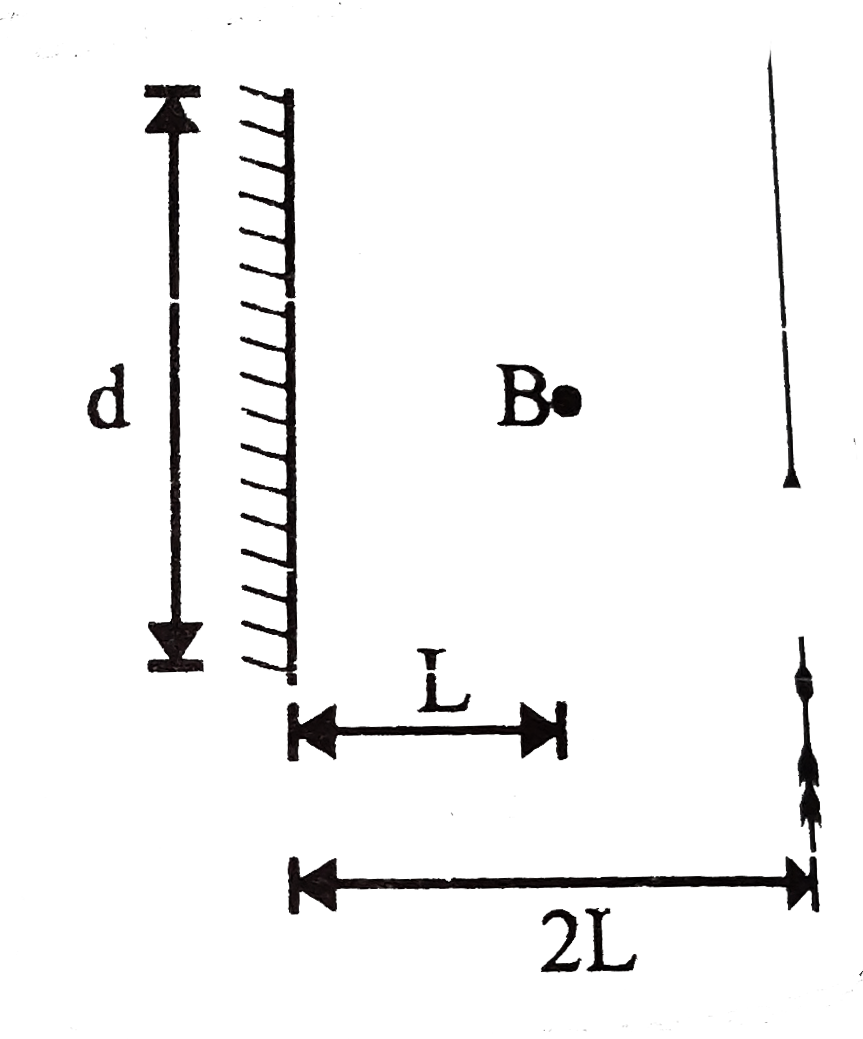Select the alternatatives.
(a) A diverging beam of light form a point source `S` having divergence angle `alpha` ,falls symmetrically on a glass slab as shown .the angles of incidence of the two extreme rays are equal .Fi the thickness of the glass slab is tand the refractive index nthe n the divergence angle of the emergent beam is (A) zero,(B) `alpha(C ) sin^(-1)(1//n)(D) 2 sin^(-1)(1//n)`

(b) Arectangular glass slab `ABCD`of refractive index `n_(1)` is immersed in water of refractive index`n_(2)(n_(1)gtn_(2))` A ray of light is incident at the surface `AB`of the slab as shown .The maximum value of the angle of incidenc e`alpha_(max)`such that the ray comes out only from the other surface `CD `is given by

(A) `"sin"^(-1)[(n_(1))/(n_(2))cos("sin"^(-1)n_(2)/n_(1))]` `(B)sin^(-1)[(n_(1))/(n_(2))cos("sin"^(-1)(1)/n_(2))] (C)sin^(-1)((n_(1))/(n_(2)))(D)sin^(-1)((n_(2))/n_(1))`
(c) A point source of lightB is placed at a distance L inother of the centre of a mirror of width hung vertically ona wall A man walks is front of the mirror along a line parallel to the mirror at a distance `2L` from it as shown .the greatest distance over which he can see the image of the light source in the mirror is (A)`d//2` (B) d,(c )2d,(d)3d,

a hollow double concave lens is made of very thin transparents meterial .It can be filled with air or either of two liquids `L_(1)andL_(2)`having refractive indices`n_(1)and n_(2)`respectively`(n_(2)gtn_(!)gt1)` the lens will diverge a parallel beam of light of it is filled with (A)air and placed in air.(B) air and immersed in`L_(1)`(C ),`L_(1)` and immersed in`L_(2)` (D),`L_(2)` ans immersed in `L_(1)`